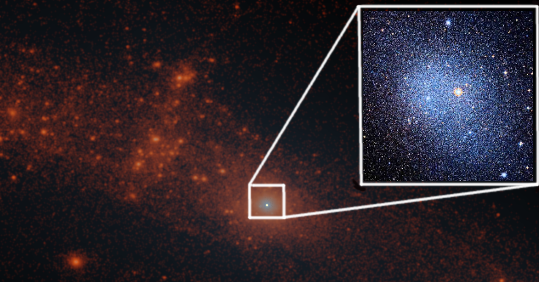Special Session SS9
24 June 2019
Dwarf galaxies near and far: bridging numerical simulations with observations
Aims and scope
 Dwarf galaxies are the smallest and faintest galaxies observed in the Universe. According to the hierarchical
standard model of cosmology, they are the most numerous ones and constitute the building block of larger systems.
Dwarf galaxies have also being identified as one of the main actors at the origin of the reionization occurring during
the first billion years of our Universe.
Dwarf galaxies are the smallest and faintest galaxies observed in the Universe. According to the hierarchical
standard model of cosmology, they are the most numerous ones and constitute the building block of larger systems.
Dwarf galaxies have also being identified as one of the main actors at the origin of the reionization occurring during
the first billion years of our Universe.
Those last ten years, large observing efforts have produced a plethora of high quality and very detailed measurements
of the Local Group dSphs, both classical and UFDs, including detailed stellar abundances from high
resolution spectroscopy. Many dwarf galaxies display simple star formation histories, dominated by
metal-poor stars. This facilitates the identification of nucleosynthesis sites and helps in understanding the ejecta of
the first generation of stars. Additionally, detailed observations have revealed the presence
of massive black holes (BHs) in their centre, potentially giving clues on the mechanisms leading to the formation of
super-massive BH (SMBH) at high redshift. Understanding the growth of these BH would also shed light on the role of
faint AGNs during the Epoch of Reionization. In parallel to those observations, cosmological numerical simulations of
dwarf galaxies including a full treatment of the baryonic physics reached an unprecedented level of accuracy, with
stellar mass resolution lower than a thousand solar masses.
These progresses let the astrophysical community with the possibility of comparing model predictions with observations
at a level of detail never achieved before. The goal of this special session is to put together observers and
theorists to tackle a set of challenging remaining questions:
- What dwarf galaxies tell us about the nature of the dark matter ?
- Are dwarf galaxies, as observed today, compatible with the cosmological standard model ?
- How do the first stars impact on the observed chemical properties of dwarf galaxies and UFDs ?
- What is the origin of Ultra Faint Dwarf (UFDs) galaxies ?
- What can we learn from the SMBH in dwarf galaxies ?
Programme
- Connecting dwarf galaxies with the standard cosmological model: successes and failures
- Impact of the first stars on the observed chemical properties of dwarf galaxies and UFDs
- R-process nucleosynthesis in dwarf galaxies
- The origin of Ultra Faint Dwarf (UFDs) galaxies
- SMBH in dwarf galaxies
Invited speakers
- Coral Wheeler (Tapir/Caltech)
- Nicolas Martin (Observatoire de Strasbourg)
- Camilla Hansen (Max Planck Institute for Astronomy, Heidelberg)
- Vivienne Baldassare (Yale University)
Scientific organisers
- Giuseppina Battaglia (IAC)
- Sven De Rijcke (UGent)
- Pascale Jablonka (EPFL)
- Evan Kirby (Caltech)
- Amy Reines (MSU)
- Yves Revaz (EPFL)
- Maxime Trebitsch (IAP)
- Anne Verhamme (UniGe)
Contact
yves.revaz @ epfl.ch
Updated on Mon Apr 01 11:18:23 CEST 2019
|